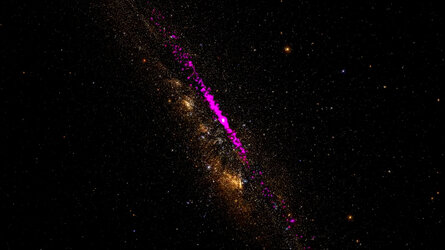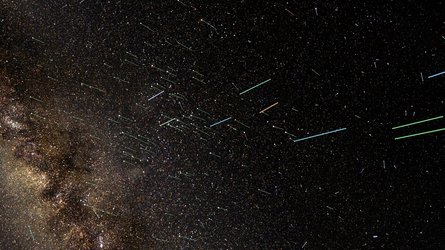
Evolution of Hyades star cluster from ~ 650 million years ago until now
Located 153 light years away, the Hyades is between 600 and 700 million years old. During that time, stars have been ‘leaking’ out of the central cluster to form two ‘tidal tails’ that stretch across space. Gaia data has now allowed these tails to be traced across the whole sky and a mystery has been uncovered. The tails should contain roughly the same number of stars as each other but there are many more stars in the leading tail than in the trailing one. This simulation shows why that might be true. The left panel shows a schematic of the Milky Way galaxy. The Hyades star cluster is shown in yellow. The right-hand panel shows a close-up of the cluster. The grey spots show clumps of matter in the Milky Way. These could be molecular clouds, other star clusters, or clumps of dark matter termed sub-halos. As time passes, the Hyades and the other clumps orbit the centre of the galaxy. Close to the end of the simulation, one of the clumps passes through one of the Hyades tidal tails, scattering stars out of the tail.






